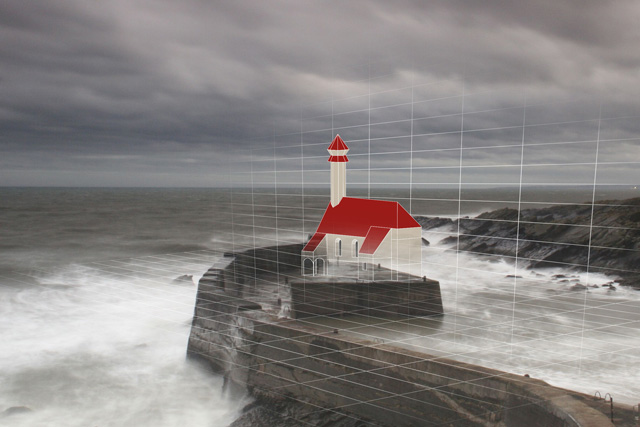Project launch KERES - Protecting cultural heritage in Germany from extreme climate events
Germany holds the EU Council Presidency until the end of December. In an ambitious program, Germany has set itself the goal of addressing the issues of climate change and the protection of cultural heritage, among others. However, there is still a lack of reliable data and scientific studies on how and, above all, which future extreme weather events will affect our cultural heritage in the various regions of Germany and what measures we can take to protect our cultural heritage. Over the next three years, researchers will investigate this for the first time for Germany in the BMBF-funded project "KERES". The research project is coordinated by the Fraunhofer Institute for Silicate Research ISC in Würzburg together with the Fraunhofer EU Office in Brussels.
Germany holds the EU Council Presidency until the end of December. In an ambitious program, Germany has set itself the goal of addressing the issues of climate change and the protection of cultural heritage, among others. However, there is still a lack of reliable data and scientific studies on how and, above all, which future extreme weather events will affect our cultural heritage in the various regions of Germany and what measures we can take to protect our cultural heritage. Over the next three years, researchers will investigate this for the first time for Germany in the BMBF-funded project "KERES". The research project is coordinated by the Fraunhofer Institute for Silicate Research ISC in Würzburg together with the Fraunhofer EU Office in Brussels.
Heat and drought increase the risk of major fires, heavy rainfall leads to more frequent flooding - the forest fires in Brandenburg this year and the flood of the century in Central Europe in 2002, which caused billions of euros worth of damage in Dresden alone, are just two examples. Which extreme weather events are to be expected in Germany in the future? How can damage to irretrievable historical sites be avoided? Which measures are successful in the long term and also make economic sense? Researchers are investigating these and other questions in the KERES project, which starts on December 1 and is funded by the German Ministry of Education and Research (BMBF) with 1.97 million euros. Under the leadership of the Fraunhofer Institute for Silicate research ISC and the Fraunhofer EU Office in Brussels, three further Fraunhofer Institutes from the Cultural Heritage Research Alliance (Fraunhofer Institute for Building Physics IBP, Fraunhofer Center for International Management and Knowledge Economy IMW, Fraunhofer Institute for Optronics, Systems Engineering and Image Exploitation IOSB) are collaborating on the project with the Climate Service Center Germany of the Helmholtz Center Geesthacht and the Prussian Palaces and Gardens Foundation Berlin-Brandenburg.
"The aim is to use high-resolution regional climate models to assess the risk of damage to historic buildings and gardens and to develop sustainable preventive and emergency measures for their preservation. Thus, the project will also make an important contribution to the European Green Deal", explains project coordinator Dr. Johanna Leissner. To coincide with the start of the project, the Research Alliance on Cultural Heritage will be the first German research association to join the "Climate Heritage Network" on 1 December. This is an international network of research and cultural institutions that are working together to achieve the climate protection goals of the Paris Climate Agreement and develop strategies for dealing with the consequences of climate change.
Preserving cultural heritage for future generations
For the KERES project, the researchers can build on two previous EU projects - Climate for Culture and Heracles - both of which dealt with the effects of global climate change on cultural heritage. The new project of the Federal Ministry of Education and Research (BMBF) will focus on the increase in extreme climate events in Germany: Longer-lasting heat waves coupled with extreme drought, hurricane-like storms, torrential rainfall, increasing temperature fluctuations and sea-level rise. These events will occur much more frequently and thus also the damage to cultural assets and infrastructures, which therefore require special protection in order to preserve them for future generations. In the foreground are historical buildings and monuments as well as the historical gardens and cultural landscapes designed by humans with their unique collections of useful and ornamental plants.
Simulation of extreme weather events
Over a period of three years, the future regional relevance of extreme weather events, expected damage to buildings and outdoor facilities and measures to prevent and manage acute damage situations will be investigated. The researchers are using new simulation methods to assess the effects of extreme weather events. These are coupled with building simulation software and an urban climate model. This allows the development of prevention strategies tailored to the individual cultural heritage sites. These findings will be bundled on a knowledge platform that will support cultural heritage institutions in both prevention and emergency management. Central to this is the structuring, linking and visual processing of data to enable risk assessment and prioritization of rescue measures and to facilitate decision-making and coordination processes. A mobile app will support coordination of rescue measures and involvement of volunteers, among others.
The basis for the success of the project is the interdisciplinary cooperation in the project team: The consortium consists of natural scientists, conservators, climate scientists, building physicists, landscape architects, computer scientists and economists, among others. In addition, important players in emergency management such as fire and disaster control, German cultural heritage institutions and an international committee of experts are involved.
Co-ordinator and contact person
Dr. Johanna Leissner
Fraunhofer-Institut für Silicatforschung
Fraunhofer EU Büro Brüssel
Rue Royale 94, B-1000 Bruxelles
Tel. +32 2 506 42 43
Email: johanna.leissner@zv.fraunhofer.de / www.fraunhofer.de
Last modified:
